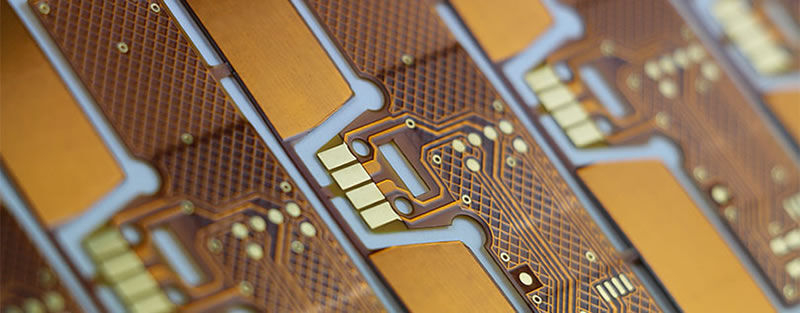
Flexible PCBs have revolutionized the world of printed circuit boards by offering the ability to bend, shape, and twist them to fit various applications instead of being constrained by a rigid structure. Without them, some modern applications would be impractical or impossible. Nevertheless, working with flex PCBs can bring about various issues that you may encounter.
However, flexible circuit boards require a distinct flex-friendly design approach.
There are several common types of flex printed circuit board issues, including:
- Solder mask/coverlay openings not wide enough: Due to the fabrication process, flexible circuitry can change shape. Designers who are accustomed to rigid circuit board design may not allow for larger tolerances for coverlay, die cutting, stiffeners, or adhesive squeeze resulting from coverlay dielectric lamination. This can lead to issues, so it's important to ensure that the openings in the coverlay are wide enough.
- Solder joints too close to bend point: Solder joints are more rigid than the rest of the copper trace due to the addition of solder. If they're too close to the bend point, the board is likely to fail due to cracked solder pads or lost lamination.
- Spacing between solder pads: Larger coverlay openings can expose the edges of adjacent conductor traces, leading to shortouts or solder bridges between connector pads or pins. Designers should ensure that there's enough space between each solder pad and its adjacent conductive trace to prevent this.
- Stress points in conductors: Trace arrangements that work for rigid circuit boards, such as those with acute junctures or sharp corners, can lead to fracture or delamination when flexed in flexible circuit boards.
- Stacked traces: Traces on the outside of the bend radius can crack when one bends the circuit if they're on top of each other and not in the neutral axis of the bend. Designing the region as one conductive layer can prevent this problem.
Design is crucial in avoiding flexible circuit board issues. It's important to work with flex PCB experts who have the necessary knowledge and experience to design and manufacture these types of boards correctly.
If you require flexible, rigid flex or any other type of PCB, consider contacting Sprintpcb. They have established themselves as a top provider of printed circuit boards and related products by employing the best design and manufacturing practices for a wide range of printed circuit boards. Additionally, their products undergo thorough quality control testing to ensure they are durable and reliable, regardless of the material, rigidity or other custom factors involved.

